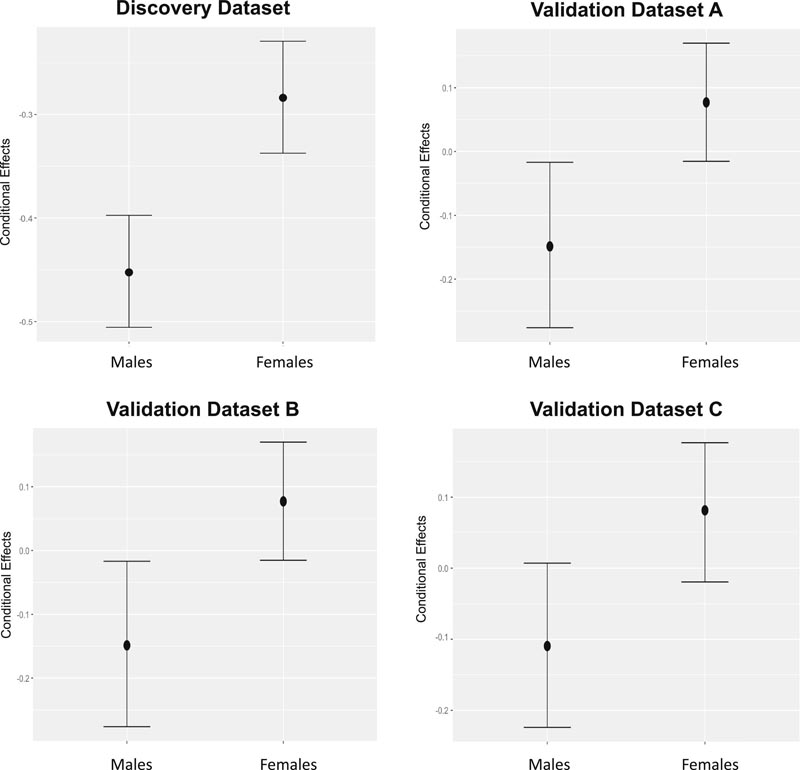Sex and age differences in “theory of mind” in 57 countries using the English version of the “Read the mind in the eyes” test
“Theory of mind” (ToM) is the ability to attribute mental states to oneself and others, to make sense of and predict human behavior.
Since the 1980s, ToM has become central to the study of human development, particularly the development of social perception and social cognition, and to understanding clinical conditions such as autism, conduct disorders, personality disorders. , anorexia and schizophrenia. ToM is also a central focus of research in comparative psychology, which addresses the question of whether ToM is unique to humans, of research in neuropsychology, which addresses how brain lesions affect ToM, and of social neuroscience, which tests the biological and social factors that influence ToM.
There is evidence that ToM follows consistent developmental patterns during childhood, with progression through different stages. Although ToM precursors in infancy are debated, some suggest that ToM precursors are evident between 9 and 15 months of age in joint attention behaviors such as gaze following, displaying behaviors, and gestures such as pointing to share interests. (“protodeclarative signaling”) . It is notable that autistic children at the earliest time they can be diagnosed show delays or deficits in both joint attention and pretend play, and at later milestones of ToM development.
Meaning In the largest study to date (to our knowledge) of the “Reading the Mind in the Eyes” test (Eyes Test), a “theory of mind” performance task , we leverage four unique data sets. (total N = 312,739), using the English version of the Eyes Test . We find an average female advantage in 57 countries. Consistent with this, there is a systematic review of translated (non-English) versions of the Eyes Test that identifies an average female advantage in eight of eight different languages. Cross-sectional analyzes also showed subtle age differences in test scores across the lifespan. We conclude that there is an average female advantage in most of the countries analyzed. Future research should investigate this in non-English speakers. |
Summary
The “Reading the Mind in the Eyes” test (Eye Test) is a widely used “theory of mind” assessment. The NIMH Research Domain Criteria recommends it as one of two tests for "understanding mental states" . Previous studies have shown an average female advantage on the test. However, it is unknown whether this female advantage exists throughout life and in a large number of countries.
Therefore, we tested sex and age differences using the English version of the Eyes Test in adolescents and adults from 57 countries. We also tested associations with sociodemographic and cognitive/personality factors. We leveraged one discovery data set (N=305,726) and three validation data sets (Ns=642; 5284; and 1087).
The results show that:
- There is a replicable average female advantage in vision test performance.
- Achievement increases during adolescence and decreases superficially during adulthood.
- The average female advantage is evident throughout life.
- There is a significant average female advantage in 36 out of 57 countries.
- There is a significant average advantage for women on translated (non-English) versions of the Eyes Test in 12 of 16 countries, as confirmed by a systematic review.
- D scores, or systematization-empathy, predict performance on the Vision Test beyond sex differences
- Female advantage is linked negatively to “prosperity” and “autonomy” and positively to “collectivism,” as confirmed by country-level exploratory analyses.
We conclude that the average female advantage in the vision test is observed at all ages and in most countries.

Figure: Sex differences in the English version of the Eyes Test in the discovery and validation data sets. Each graph shows the conditional effects of sex (population-level predictor) with 95% credibility intervals. As can be seen, there is evidence of an average female advantage in each of the four data sets.
Discussion
We confirmed an average female advantage on the widely used “Reading the Mind in the Eyes” test (Eyes Test) in four samples tested with the English version of the test. We show that this average female advantage persists across the lifespan, from 16 to 70 years of age. Our results also show that the average female advantage on the English version of the Eyes Test was evident in 36 of the 57 countries we observed (in those individuals whose primary or second language was English). There was no country where men scored significantly higher on the vision test than women. Our systematic review of translated versions of the Eyes Test also shows a female advantage that reached statistical significance in 12 of the 16 studies.
| In conclusion , in one of the largest studies to date on ToM, we found strong evidence supporting an average female advantage in ToM using the widely adapted Eyes Test . We were able to replicate the finding in three additional, diverse data sets. The average female advantage was present at all age years across the lifespan. We hope to conduct more research that explores the biological and social determinants of this effect and how they interact. |
















